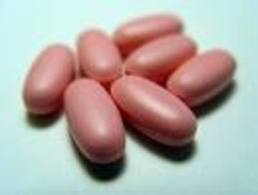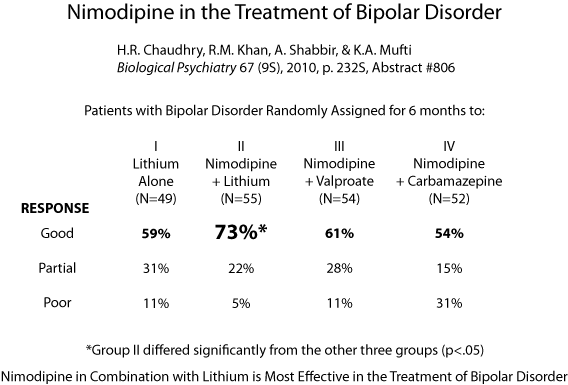Ketamine Effective in ECT-Resistant Depression
 In an abstract presented at the Society of Biological Psychiatry meeting in May, Lobna Ibrahim and Carlos Zarate of the National Institute of Mental Health reported that intravenous infusions of ketamine were effective in a majority of patients with highly treatment-resistant depression, i.e. even those who had been unresponsive to a course of electroconvulsive therapy.
In an abstract presented at the Society of Biological Psychiatry meeting in May, Lobna Ibrahim and Carlos Zarate of the National Institute of Mental Health reported that intravenous infusions of ketamine were effective in a majority of patients with highly treatment-resistant depression, i.e. even those who had been unresponsive to a course of electroconvulsive therapy.
Editor’s note: Few treatments have been explored for this subgroup of highly treatment-resistant patients, although some have been referred for experimental protocols with intracranial deep brain stimulation (DBS) and others have been successfully treated by Mark George and colleagues at the Medical University of South Carolina with very high intensity rTMS over the left prefrontal cortex (at 130% of motor threshold, 10 Hz stimulation). Further study is needed to determine what follow-up procedures can be used to sustain an acute response to ketamine, rTMS, or ECT for the long term. Read more
Moclobemide May Help Depression and Post-Partum Blues
Monoamine oxidase inhibitors (MAO-Is) are a type of antidepressant that is often effective for people with anxious depression or comorbid panic attacks, especially when other antidepressants don’t work. This may be because MAO-Is work on all three neurotransmitter systems implicated in depression: dopamine, norepinephrine, and serotonin.

In a recent study presented at the 65th Annual Scientific Convention of the Society of Biological Psychiatry, Julia Sacher et al. found that six weeks of therapeutic doses of the MAO-I moclobemide (at doses of 300 mg twice a day) significantly decreased monoamine oxidase A, as measured by PET scans in brain regions implicated in mood disorders. In a comparison of moclobemide, placebo, and the herbal preparation St. John’s Wort, only moclobemide had a significant effect. Read more
Valnoctamide Effective in Mania, Maybe Without Valproate’s Side Effects
 Valproate (Depakote), also known as divalproex sodium and valproic acid (VPA), is highly effective in the treatment of mania, seizures, and migraine. However, its use in pregnant mothers can cause birth defects and developmental delay. A closely related compound, valnoctamide, may not pose the same dangers, but its efficacy in mania has only recently been investigated.
Valproate (Depakote), also known as divalproex sodium and valproic acid (VPA), is highly effective in the treatment of mania, seizures, and migraine. However, its use in pregnant mothers can cause birth defects and developmental delay. A closely related compound, valnoctamide, may not pose the same dangers, but its efficacy in mania has only recently been investigated.
Yuly Bersudsky et al. reported at the 4th Biennial Conference of the International Society for Bipolar Disorders conference in Sao Paulo, Brazil in March that valnoctamide was more effective than placebo as an add-on to risperidone for the treatment of mania.
Since there is now evidence that valnoctamide does work in mania, it is plausible that some of the shared characteristics of valproate and valnoctamide, such as increasing brain GABA and blocking sodium channels, are responsible for both drugs’ antimanic effects. Read more
N-acetylcysteine Affects Electrical Activity in Brain
At the 65th Annual Scientific Convention of the Society of Biological Psychiatry, researcher Christian Carmeli reported that N-acetylcysteine (NAC, 2 gm/day for six months) increased electroencephalogram (EEG) synchrony over the frontal cortical and left temporal regions in patients with schizophrenia. The EEG measures the frequency and amplitude of electrical activity on both sides of the brain.
Editor’s note: These data provide a neurophysiological mechanism that could explain the positive effects of NAC previously observed by researcher Mike Berk and associates in both schizophrenia and bipolar disorders and published in Biological Psychiatry in 2008. NAC is both a glutathione precursor providing antioxidant effects and a modulator of hyper-responsive glutamate reactivity in the n. accumbens or ventral striatum, the reward area of the brain. In placebo-controlled studies NAC appears effective in treating cocaine, heroin, and gambling addiction, as well as trichotillomania (compulsive hair-pulling). These effects are thought to be related to NAC’s dampening of glutamate responses in the n. accumbens, which, along with the dorsal striatum, appears to mediate habit memory. Read more
The Role of Calcium in Genetic Vulnerability, Pathophysiology, and Treatment Of Bipolar Illness
One of the most consistent findings in biological psychiatry is that levels of intracellular calcium in blood elements (platelets and white cells) are higher than normal in patients with mood disorders, particularly bipolar disorder. These data are now supported by genome-wide association studies that have identified a relationship between alterations in a calcium channel and vulnerability to bipolar illness. The specific alteration is in the alpha-IC subunit of the L-type calcium channels, otherwise referred to as CACNA1C. These findings were initially reported by one group funded by the Welcome Trust, a charitable organization that funds health research, in a series of studies that included thousands of patients and controls. Investigator Pamela Sklar later replicated these findings in another large independent sample.
At the 65th Annual Scientific Convention of the Society of Biological Psychiatry, investigator Tyson Tragon reported that there were higher levels of CACNA1C in the cingulate cortex in autopsy specimens of those with bipolar illness than in controls. In a study of mice, some of which had the gene for the glutamate receptor subunit GLuR6 knocked out (i.e. production of the gene was artificially limited), the researchers found that the L-type dihydropyridine calcium channel blocker nimodipine decreased hyperactivity, amphetamine super-sensitivity, risk-taking behavior, and aggression in those with the gene removed. The dihydropyridine-type drugs like nimodipine also decreased stress-related immobilization in the wild type (the animal with normal genes) but not the knockout animals (the ones lacking GLuR6). These data suggest that alterations in a subunit of the dihydropyridine-responsive L-type calcium channel are a risk factor for bipolar illness, a brain abnormality in those who have the illness, and relevant to behavioral/pharmacological models.
Several research groups have noted that treatment with the L-type calcium channel blocker nimodipine (Nimotop) can sometimes have positive effects in mania and depression in those poorly responsive to lithium carbonate. This has been documented by Pazzaglia and Post in double blind off-on-off-on clinical trials (i.e. during off trials patients received placebo and during on trials patients received nimodipine, but the raters were unaware which pill the patient had received). In several instances, a positive response continued when the patient was switched from nimodipine to another dihydropyridine, isradapine (DynaCirc), but not when patients were switched to a different L-type calcium channel blocker, the phenylalkylamine verapamil (sold under the names Calan, Covera, Isoptin, and Verelan), which acts at a slightly different site on the channel. Read more

-N-Acetylcysteine_Structural_Formulae.png)

